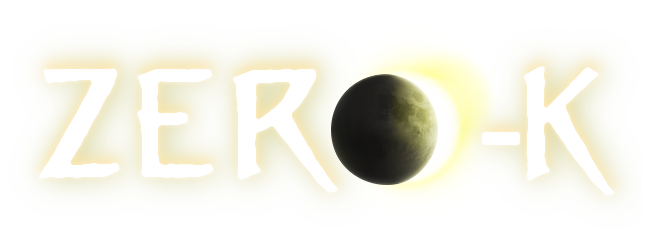Hi. Cliver here, the strategy technician who shares tips I noticed, but tips which I didn't hear mentioned. As a permanent subgiant.
Zero-K's tech tree is flat in a sense where you can build any tech at any moment. Except, what if I told you that the tech tree is pretty linear?
Although indeed, I can start rushing big berthas, trinities, minotaurs and desolators from 1st minute, most of the time, this is a decision so bad that it will cost me the entire game. (If that wasn't enough, I would be blamed for not building the weakest units, raiders, instead.) Even when it comes to ships and spiders and striders, it is true that they can be built at any moment in the game, so long as one can build the right factory, but that is the wonder of Zero-K's tech tree! Even if I can build the unit at any moment, I will still, WILLINGY CHOOSE, not to rush late game tech and start with small beginnings instead.
This is a marvel of Zero-K's technology. So many games struggle with tech rushes, where a player tries to build starport units from the very first second of the game, or try and tech up to the heavy tanks to ignore infantry altogether, or to see the more expensive units being spammed as soon as they become available. These "rushes" are delayed by expansive tech, but Zero-K players don't get any delay, they can build the "highest tier" of units from the very first second! Why do Zero-K players choose to build cheap fodder when, in other games, the players would prefer to build the heaviest units?
Simple answer: The game has good game design. But allow me to explain every "tier" in full detail.
First, rushes.
Q: Why not rush Gunships?
A: Even a simple raider can brawl with a gunship.
Q: Why not rush tanks?
A: A single minotaur won't be able to protect all of the land in the first second of the game.
Second, the actual tech tree.
Early game ("conquest" phase): Rovers and cloakbots.
Reason: Rovers & cloakbots' squads are cost efficient. They make for fragile armies (Reason:
small armies are stronger than big armies), but the stronger factory armies are too unaffordable. This is because the heavy units are only effective in a large army, which the enemy won't be able to afford early on. Meanwhile, cloakbots' and rovers' armies perform well in small scales, being unaffected by the "big army fragility." When the player's economy ramps up to build fragile, giant armies for the cloakbots, they can usually afford a heavy factory with no negative consequences.
Mid game ("conquest" phase): Shieldbots and tanks. + Gunships & Planes
Reason: Shieldbots' units are designed to be unaffected by the
"big army fragility," as their shieldbot armies act as one big unit, with every added unit adding health or damage to the "big army unit." Tanks, on the other hand, lack the "big army fragility" because minotaurs don't take "attrition damage" easily. (Now that I think about it, the whole
"big army fragility" is a fancy term for "attrition vulnerability.")
Reason (Air units): Air units get countered easily. If the enemy has built anti-air, it is nigh-impossible to attack. The air units are important for logistics, which early game units don't struggle with, or tactical strikes, when early game lacks tactical units to strike.
Late game ("crusade" phase): Striders and superweapons.
Reason: Striders and superweapons give a flat bonus to an army's strength, when used properly. However, they are designed to be unaffordable. Unaffordable, so long as the player doesn't control half of the map. And if a player wants to "tech up" to striders, building the right building combination isn't enough, they have to make sure that they haven't died to the enemy and have built basic economy first.
In conclusion, the tech tree is separated into three tiers. The second tier is meant to be strong in big armies, which early game doesn't worry about; air units only get built to help heavy units that don't struggle with attrition, which are weaker in the early game; striders don't get built because without a standard-level economy, the player's base will be left too vulnerable for the strider to be completed. Nearly every unit in the game functions by the logic of these three tiers: From berthas to desolators, from superweapons to individual spider units, from naval combat to economy.
At the same time, it is because Zero-K uses game knowledge to build the tiers that the game suffers so little from other "tier rushes," famous in other games.

